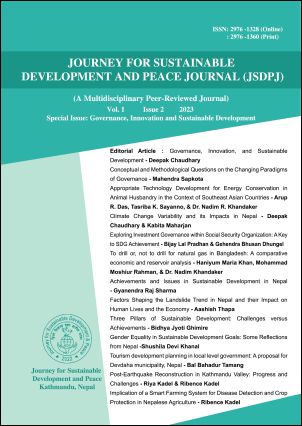Post-Earthquake Reconstruction in Kathmandu Valley: Progress and Challenges
DOI:
https://doi.org/10.3126/jsdpj.v1i02.58274Keywords:
Earthquake, Reconstruction, Reinforced, RestorationAbstract
The 2015 Gorkha earthquake in Nepal inflicted significant human casualties and economic losses, highlighting the need for improved construction techniques and seismic safety measures. This study examines the post-earthquake scenarios, types of earthquake-induced damages, reconstruction methodologies, and reconstruction progress in Kathmandu Valley. The dominant pre-earthquake building types were Reinforced Cement Concrete (RCC) structures in Kathmandu, and Stone Mud Mortar (SMM) and Brick Mud Mortar (BMM) structures in Bhaktapur. The earthquake caused extensive damage to both reinforced and non-reinforced masonry structures due to their low strength and poor construction practices. Failures included wall separation, in-plane, and out-plane failures, overturning, and floor collapse. The reconstruction efforts have been primarily focused on private housing, with progress varying across different sectors. While private housing has seen satisfactory reconstruction, public heritage sites, buildings, educational and health institutions, and government structures lag behind. Retrofitting techniques have proven to be more cost-effective than rebuilding RCC structures. The preference for SMM and BMC structures persists in other regions. This abstract provides a concise overview of the article's key findings regarding post-earthquake reconstruction in Kathmandu Valley, emphasizing the need for accelerated efforts to restore public infrastructure and heritage sites.
Downloads
Downloads
Published
How to Cite
Issue
Section
License
This license enables reusers to distribute, remix, adapt, and build upon the material in any medium or format for noncommercial purposes only, and only so long as attribution is given to the creator.




